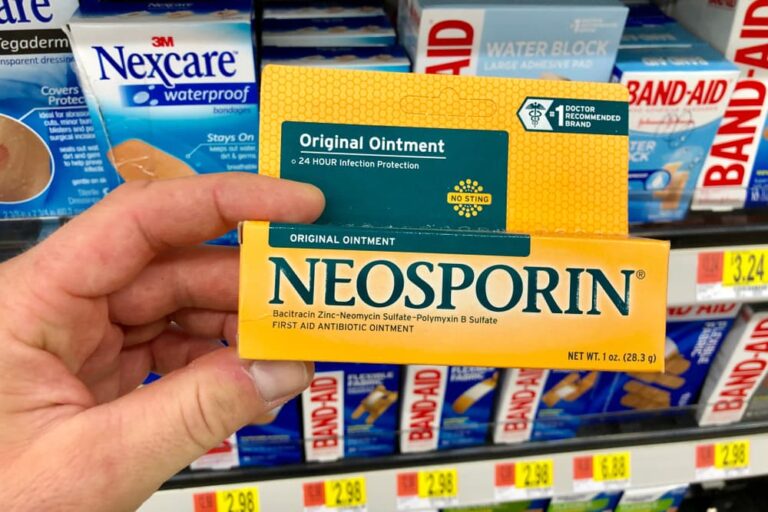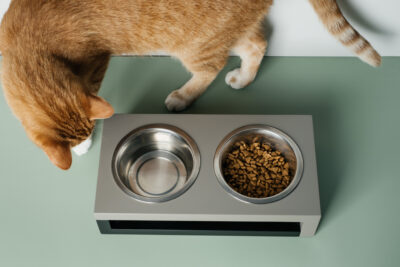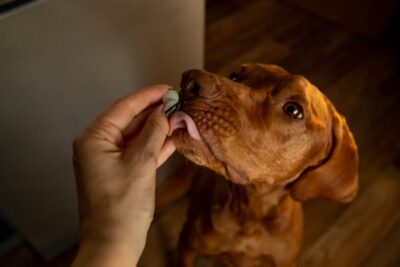Neosporin for Dogs: Is It Safe?

Medication details
- Medication type: Antibiotic
- Form: Topical
- Prescription required? No
- FDA approved? No
- Brand names: Neosporin
- Common names: Triple antibiotic ointment
- Available dosages: Typically includes 3.5 g Neomycin / 400 IU Bacitracin / 5000 IU Polymixin B per gram
- Expiration range: Long shelf life
All featured products are chosen at the discretion of the GreatPetCare editorial team and do not reflect a direct endorsement by the author or reviewer.
When you have pets—especially ones that are prone to trouble—keeping your first aid kit stocked is a must. One of the staples of every home first aid kit is a triple antibiotic ointment, also known as Neosporin. You may have already used this over-the-counter topical ointment for cuts and scrapes on your human family members. But is Neosporin for dogs safe and effective?
Using a small amount of Neosporin on your dog may be OK if your veterinarian recommends it. However, there are a few important caveats. Before you break out a new tube for that minor injury, make sure you know the potential risks of using Neosporin on a dog. Alternatives to Neosporin may be better options for your pet first aid kit.
Can You Use Neosporin on Your Dog?

Neosporin can be used topically to treat minor cuts and scrapes in dogs, just like in humans. However, it is best to check with your veterinarian before using any over-the-counter medication intended for humans on your dog. Applying a light layer to the affected area may help prevent infection and encourage faster wound healing. However, it’s only for use on the dog’s skin where they can’t lick it off.
Neosporin is not safe for dogs to consume, and can cause unpleasant gastrointestinal side effects if ingested. Since you can’t completely prevent your dog from licking it off, you may want to consider an alternative to Neosporin for dogs or using some sort of barrier to prevent ingestion. Never use Neosporin in or around the ears, eyes, or mouth.
Neosporin may be good to have on hand in a pinch. Still, it’s not designed for pets and should not be used often. If you frequently find yourself reaching for Neosporin for your dog, consider an alternative that’s specifically designed for pets, such as Animax or Vetasan ointments.
Neosporin should not be used to treat large or deep wounds or applied to large areas of the body. If your pet’s cut or scrape is swollen, red, painful, or has a discharge, then your dog should be seen by a veterinarian rather than being treated at home. You should also seek veterinary care if your pet’s cut does not improve within a few days after using Neosporin.
The ointment contains three antibiotics: neomycin sulfate, polymixin B sulfate, and bacitracin zinc, typically in a petroleum base. These antibiotics make the ointment effective against many common bacteria. However, they will not treat other infectious agents such as viruses, fungi, or parasites. Because Neosporin is an over-the-counter product, the FDA does not review or regulate it.
Is Neosporin Safe for Dogs?
Used in small amounts on the skin, Neosporin is generally safe for dogs. If your veterinarian gives you the green light to use Neosporin on your dog, only use it as directed on your dog’s skin. Otherwise, there are a few other things to note before moving forward.
Neopsorin can be toxic to cats, so use should be avoided in households with cats, as they may lick it off the dog’s skin.
Can You Put Neosporin on Your Dog’s Sores?
Neosporin contains three antibiotics: neomycin sulfate, polymixin B sulfate, and bacitracin zinc, typically in a petroleum base. Used on humans, these antibiotics can help prevent infections and speed up the healing process. The same is true when applied to cuts and scrapes on dogs. However, when using Neosporin topically, make sure to only apply it in areas that your dog can’t reach with his mouth, as some of its ingredients are toxic when ingested. Additionally, using it in the ear canal can result in damage to the eardrum and may worsen existing ear infections.
What Happens if a Dog Licks Neosporin?
Neosporin may cause digestive upset for your dog if given in large quantities. That is why you should prevent your dog from licking it. On top of potentially causing tummy troubles for your pup, licking the area where you’ve applied Neosporin may also make his cut or scrape worse by introducing additional bacteria and moisture from your dog’s mouth to the area.
To stop your dog from licking the treated area, lightly cover it with a T-shirt, sock, or recovery suit. Depending on where the wound is located, you may also be able to use an Elizabethan collar or any other dog cone alternative.


Is Neosporin the Same Thing as Triple Antibiotic Ophthalmic Ointment?
No. Neosporin is not the same as triple antibiotic ophthalmic ointment and should never be used in your pet’s eyes. While some of the ingredients may be the same in Neosporin and eye ointments, it’s important to know that the formulation of Neopsorin does not make it safe to apply to the eye. Ophthalmic problems can worsen quickly. If your pet is having eye issues, see your veterinarian right away rather than trying to treat the problem at home.
Neosporin Side Effects in Dogs

If using Neosporin, it is important to look for potential side effects. The two more common side effects are contact dermatitis or an allergic reaction.
Contact dermatitis occurs as local inflammation at the site where you applied the ointment. Signs of an allergic reaction may include red, scaly, or itchy skin. If either of these symptoms occur, gently wipe away any residual ointment with a warm washcloth and discontinue Neosporin use. If the irritation does not improve in 24 hours, see your veterinarian for further care.
Also, while not an immediate issue for your dog, increased bacterial resistance is a growing concern with the widespread use of topical antibiotics (1). For that reason alone, it’s a good idea to consult your vet if using an antibiotic ointment like Neosporin is even necessary.
More severe side effects are rare but may include:
- Vomiting or diarrhea if ingested
- Irritation if used in the eyes
- Hearing loss, infection, and irritation if used in the ears (2)
- Development of resistant infections
Do not use Neosporin in combination with other topical medications unless your veterinarian directs you to. Because Neosporin is only used externally, there is little risk of it interacting with any medications your pet takes by mouth.
Neosporin Alternatives for Dogs
Other topical antibacterial treatments available over the counter include silver sulfadiazine (SSD) ointment, bacitracin ointment, and polysporin ointment.
However, you can purchase topical antibacterial products specifically formulated and approved for use on dogs over the counter at pet stores or with a prescription from your veterinary clinic. These include Vetasan, Animax (a branded version of the generic NNTT ointment containing nystatin, neomycin sulfate, thiostrepton, and triamcinolone), and Muricin (or generic Mupirocin).





Only use these products externally on small areas of the skin and never on large or deep wounds. If the scrape or cut you are treating does not improve within 24-48 hours, see your veterinarian for further care.
Do not use over-the-counter topical products for significant injuries or as a substitute for appropriate veterinary care. If your pet has a large or deep wound or a skin infection over a large area of the body, see your veterinarian immediately.
They may prescribe oral antibiotics, medicated shampoos, a stronger topical ointment, or other targeted treatments to help your dog heal more quickly. For extensive or severe skin infections and wounds, your vet may recommend a topical therapy used in combination with oral antibiotics.
Editorial credit for featured image: ZikG / Shutterstock.com









